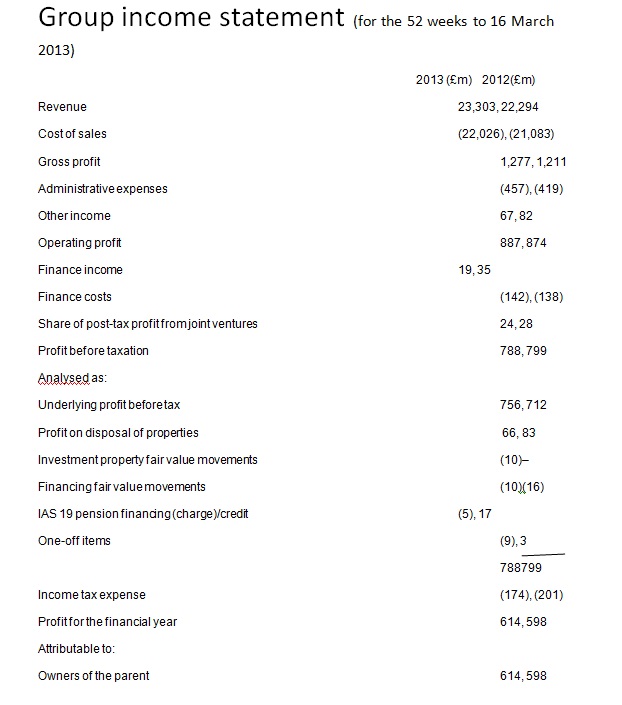Introduction
Sainsbury is a reputable brand in the UK food retail market. In this paper, Sainsbury’s market positioning and competitiveness have been evaluated using two strategic analysis tools, namely, the Resource-based View (RBV) and Porter’s Five Forces. The analysis has revealed that the competition in the UK supermarket industry is very high. Moreover, the sector is overcrowded with players such as Tesco, Asda, Morrisons, and Co-op competing with Sainsbury both directly and indirectly. The ‘Big Four’ comprising of Tesco, Sainsbury’s, Morrisons, and Asda employ different strategies to acquire a competitive edge in the sector.
Main body
Although the market environment is highly competitive and unstable, Sainsbury has a chance to maintain or even grow its market share and position in the UK food retail sector. Sainsbury’s market share has been rising steadily since 2007 (14.9%) and currently stands at 17.7%. The retailer is currently ranked second in the UK supermarket sector. Its profits have improved significantly since 2004. In addition, Sainsbury has not been largely affected by external forces such as recessions. Moreover, as revealed in Porter’s Five Forces analysis, Sainsbury has stable relationships with its suppliers, which can shield the supermarket from costs associated with an increase in the prices of materials.
In recent years, Sainsbury has implemented a number of strategies to improve its competitiveness. Its expansion strategy, which includes online retail services (Sainsbury Online) and convenience stores, can help the retailer increase its market presence. The supermarket has also adopted diversification strategies, including non-food products (fair-trade cotton clothing), banking services, and property investments. Sainsbury’s diversification and expansion strategies will enable the supermarket to maintain its current market share and position in a rapidly changing retail market. Sainsbury can also increase its profits through overseas expansion. New markets in Asia provide great opportunities for Sainsbury to grow its market share and profitability.
Sainsbury sells quality products at affordable prices. The company has an efficient pricing policy, which has made it a favorite brand for many customers. The market for low-priced branded products is increasing at a faster rate. Moreover, Sainsbury’s promotional strategies, including online marketing, are both innovative and can help the firm to sustain its position in the retail sector. In particular, the growth of its online segment has contributed greatly to Sainsbury’s expansion. Sainsbury has many convenience stores and strong quality brands, which can help it to challenge the German players like Aldi and Lidl (discounters) as well as premium-positioned players like M&S and Waitrose.
Conclusion
In sum, Sainsbury’s strategies give the firm a strong competitive advantage in a rapidly changing business environment. Sainsbury, through loyalty cards, supplier partnerships, economies of scale, effective pricing, and online marketing, has managed to maintain a relatively steady growth since 2007. The firm’s strong brand, focus on quality, and loyalty cards will help it retain its current customers and attract new ones. Its differentiation strategy also promises to improve the firm’s earnings and prevent market saturation. Sainsbury has launched a non-food product line (clothing) and online marketing platform in a bid to diversify its product portfolio. In addition, overseas markets provide good opportunities for Sainsbury to generate more revenue to finance its domestic growth. Asda and Morrison, which are the third and fourth largest retailers in the UK market, do not pose a major threat to Sainsbury’s market position. On the contrary, Sainsbury, through its current strategies, is well placed to sustain its market share or even challenge Tesco’s dominant market position.
Appendix
J Sainsbury plc
Annual Report and Financial Statements 2013
Financial statements
